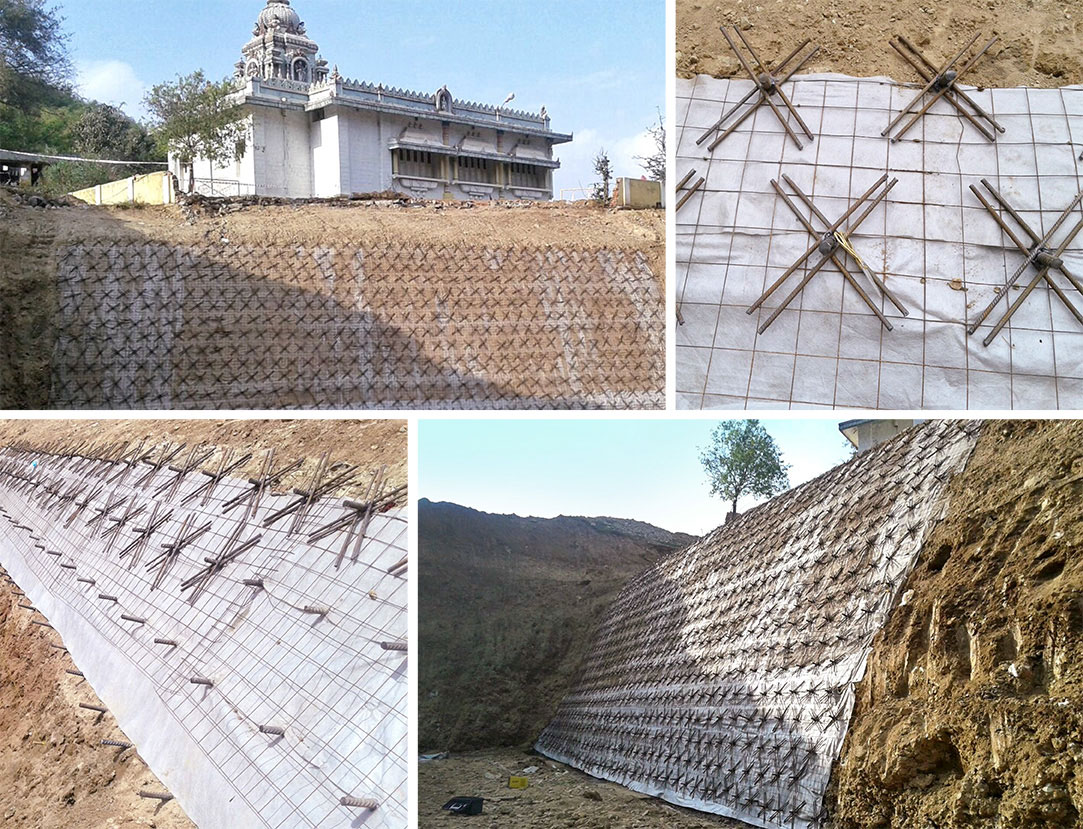Stabilization of slope located below a temple at downstream side of Canal Outlet Dam under Upper Badra, in the state of Karnataka, India.
Project Details
TYPE
RE Wall Type
TerraNail® with Welded wire mesh and Geotextile layer
OWNER
Karanataka Neeravari Nigam Limited
CONTRACTOR
RNS Infrastructure Limited
CONSTRUCTION YEAR
11/2014 to 12/2014
DESIGNER + CONSULTANT
Terre Armée (Reinforced Earth India Pvt. Ltd.)


Background
Upper Badra Project is a Major Irrigation Project. This project envisages lifting 21.5 TMC of water from Tungabhadra sub basin to Vedavathy valley. Thereafter, by gravity flow through canal, irrigation will be provided to 1,04,989 ha of land in Hosadurga, Hiriyur, Chitradurga and Challakere taluks and 2,276 ha of land in Kadur and Tarikere taluks, totaling to 1,07,265 ha by utilizing 15.9 TMC of water.
The project also proposed restoration of 119 tanks in Tumkur and Kolar districts and 37 tanks in Chickmagalur and Chitradurga districts and providing water to an extent of 75% of live capacity by utilizing 5.6 TMC of water to recharge the ground water table to facilitate drinking water.
The project also involves, dismantling and construction of a new minor dam to provide outlet for irrigation canals.

Challenge
At the downstream side of the dam, a number of pipes were provided at the bottom to serve as outlets for canals in a controlled manner. However, in the new proposal, pipe culverts were to be replaced with RCC Box structures. As RCC box structure dimensions are bigger for additional capacity, the adjacent area needed to be excavated.
A Temple situated on adjacent land was at an elevation of 13m, which needed to be protected against slope failure during construction.
The requirement was to protect the slope temporarily for the period of construction of RCC Box, which would take at least a year’s time.

Solution
In a detailed design process, Terre Armée in India used in-house technical know-how to design the in-situ soil reinforcement in the form of TerraNail® to stabilize the slope. Since the purpose was temporary, Terre Armée in India opted for a driven system.
The TerraNail® system comprised of black steel Fe 500 grade nails driven up to 9m at designed intervals.
The design principal was based upon Bishop’s stability analysis.
To economize the system, Non-woven Geotextile held by welded wire mesh with cross reinforcement bars were proposed as fascia to protect local failure of soil.
By this method, Terre Armée in India successfully provided the solution for temporary protection of slope as well as completely avoided the shotcrete proposed earlier.
This solution also provided a path for water seepage, which otherwise would have been trapped due to shotcreting and imposed pure water pressure on the slope.
